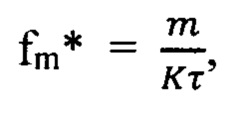FIELD: optical signals reception.
SUBSTANCE: invention relates to the reception of optical signals, in particular to the technique of receiving signals using avalanche photodiodes, and can be used in location, communications and other photoelectronic systems. The method for incoherent accumulation of light-location signals, including a series of probing cycles, in each probing cycle, receiving a reflected signal and comparing the received signal with analog threshold levels, accumulating the sum of excesses of analog threshold levels, taking into account the weighting factor of the level, which is used to judge the presence of a signal by comparing the sum of excesses with threshold number, the reception of reflected signals is carried out using an avalanche photodiode in N channels of the reflected signal delay, characterized by the time duration of the channel τ and the delay measurement range Т=Nτ, where N is the number of channels, the avalanche multiplication coefficient of the photodiode, optimal in terms of signal-to-noise ratio, is preliminarily set Mopt, then, by controlling the bias voltage of the photodiode, the frequency fm is reduced to the maximum allowable level fm*, in this mode, the average duration of microplasma pulses tm, the minimum amplitude Ummin of microplasma pulses are determined, an additional threshold level Up is set according to the condition Up<Ummin, and if in the current delay channel the emission of a mixture of signal and noise exceeds the threshold Up, then in this accumulation cycle, signal processing in this channel is blocked. The maximum permissible level of the frequency of microplasma pulses fm* can be set according to the dependence  , where
, where  - the allowable amount of microplasmas in one accumulation channel in one cycle; K - the number of accumulation cycles; τ - time width of the accumulation channel; Kthr - the threshold value of the accumulated sum in one channel, at which a decision is made about the presence of a signal (threshold number); χ<<1 - coefficient providing the condition Qn+Qm≤Q; Q - the probability of signal skipping (probability of non-detection); Qn - component of the signal skip probability due to fluctuation noise; Qm - the probability of signal skipping due to the influence of microplasmas.
- the allowable amount of microplasmas in one accumulation channel in one cycle; K - the number of accumulation cycles; τ - time width of the accumulation channel; Kthr - the threshold value of the accumulated sum in one channel, at which a decision is made about the presence of a signal (threshold number); χ<<1 - coefficient providing the condition Qn+Qm≤Q; Q - the probability of signal skipping (probability of non-detection); Qn - component of the signal skip probability due to fluctuation noise; Qm - the probability of signal skipping due to the influence of microplasmas.
EFFECT: theoretically the ultimate sensitivity is ensured in all operating conditions, taking into account microplasma breakdowns and fluctuation noise.
3 cl, 3 dwg
| Title | Year | Author | Number |
|---|---|---|---|
| METHOD FOR INCOHERENT ACCUMULATION OF PULSED LIGHT-LOCATION SIGNALS | 2022 |
|
RU2791151C1 |
| METHOD FOR ACCUMULATING LIGHT-LOCATION SIGNALS | 2023 |
|
RU2810710C1 |
| METHOD FOR PULSE LOCATION RANGING | 2022 |
|
RU2792086C1 |
| METHOD FOR THRESHOLD DETECTION OF OPTICAL SIGNALS | 2021 |
|
RU2778629C1 |
| METHOD OF INCOHERENT ACCUMULATION OF LIGHT-DETECTING SIGNALS | 2007 |
|
RU2359226C1 |
| METHOD FOR RECEIVING OPTICAL SIGNALS | 2021 |
|
RU2778047C1 |
| METHOD FOR RECEIVING PULSED OPTICAL SIGNALS | 2021 |
|
RU2778048C1 |
| METHOD FOR STABILIZING THE AVALANCHE MODE OF A PHOTODIODE | 2021 |
|
RU2778045C1 |
| METHOD FOR STABILIZING THE AVALANCHE PHOTODIODE MODE | 2021 |
|
RU2778976C1 |
| LASER PULSE RANGEFINDER | 2022 |
|
RU2791186C1 |
Authors
Dates
2023-01-26—Published
2022-06-15—Filed